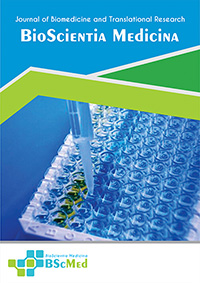Main Article Content
Abstract
Background: Metoclopramide, a dopamine D2 receptor antagonist, is used for its antiemetic and prokinetic properties. However, its use in pediatric populations is restricted due to a significant risk of neurological adverse effects, particularly acute extrapyramidal symptoms (EPS). These reactions, including acute dystonia, are more frequent in children compared to adults, posing diagnostic and management challenges.
Case presentation: We report the case of a 10-year-old girl who presented with acute torticollis and oculogyric crisis following the administration of metoclopramide syrup for fever and vomiting. The symptoms developed approximately one day after initiating the medication. Physical examination and basic laboratory results were otherwise largely unremarkable, apart from elevated white blood cells suggestive of an underlying infection. A diagnosis of metoclopramide-induced acute extrapyramidal syndrome was made.
Conclusion: The patient experienced rapid resolution of symptoms within 30 minutes following the administration of intravenous diphenhydramine. Metoclopramide was discontinued, and she was discharged without symptom recurrence. This case underscores the importance of recognizing metoclopramide-induced EPS in children, the diagnostic difficulties posed by its varied presentation potentially mimicking other serious neurological conditions, and the effectiveness of prompt management with anticholinergic agents like diphenhydramine. Clinicians must maintain a high index of suspicion, adhere to restrictive prescribing guidelines for metoclopramide in pediatrics, and consider safer antiemetic alternatives.
Keywords
Article Details
As our aim is to disseminate original research article, hence the publishing right is a necessary one. The publishing right is needed in order to reach the agreement between the author and publisher. As the journal is fully open access, the authors will sign an exclusive license agreement.
The authors have the right to:
- Share their article in the same ways permitted to third parties under the relevant user license.
- Retain copyright, patent, trademark and other intellectual property rights including research data.
- Proper attribution and credit for the published work.
For the open access article, the publisher is granted to the following right.
- The non-exclusive right to publish the article and grant right to others.
- For the published article, the publisher applied for the Creative Commons Attribution-NonCommercial-ShareAlike 4.0 International License.





